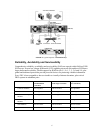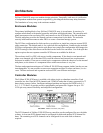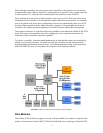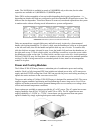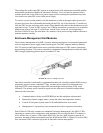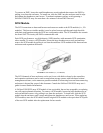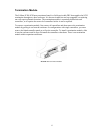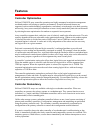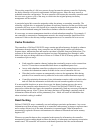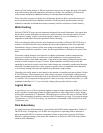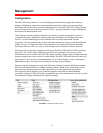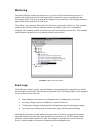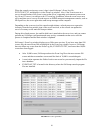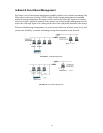
Features
Controller Optimization
SANnet II 200 SCSI array controller operations are highly automated to minimize management
workloads and are self-tuning to optimize performance. Powerful advanced features are
supported, such as multi-threading, segmentation, read-ahead, write-through, write-back, queuing
and sorting. Array users can adjust controllers to more closely match their particular environment
by selecting between optimization for random or sequential access patterns.
Array controllers segment their cache into a set of relatively small cache allocation units. The unit
capacity depends on the user-selectable cache optimization setting. Whenever the random option
is selected, the cache is divided into units of 4KB each. Units of 16KB are created when the
sequential option is selected. A cache unit is fully independent of the others and can serve any
one logical drive at a given moment.
Each unit is automatically allocated by the controller’s caching algorithms to provide read
caching or write caching and dynamically reassigned as needed. For example, when the number
of vacant cache units becomes low, write-back units might be flushed to disks or read-ahead units
may be unallocated to make them available for other uses. Empty cache units can be allocated for
any necessary purpose, regardless of the assignment they most recently held.
A controller’s optimization setting also affects how logical drives are organized and initialized.
When the random option is selected, each disk used in a logical drive will be segmented into
32KB per segment. When the sequential option is selected, the segment size is 128KB. The
sequential optimization option must be used when creating logical drives with total storage
capacities of 512GB or more.
The controller optimization setting has a profound effect on the logical organization and
management of cache and disks. An option must be selected before logical drives can be created,
but the optimization setting cannot be changed dynamically. For maximum flexibility, choose the
sequential optimization option to allow the creation of logical drives of any size.
Controller Redundancy
SANnet II 200 SCSI arrays are available with single or redundant controllers. When two
controllers are present, they always operate as a redundant pair. They cannot function as two
individual, i.e., single controllers. Redundant controllers can be set to function in active/active
(recommended) or active/standby pairs.
Unlike other storage systems, redundant controllers behave as one virtual system consisting of
primary and secondary controllers. Configuration, management and monitoring are performed
using the primary controller only. The secondary controller automatically synchronizes its
configuration to the primary controller to ensure their configuration remains identical.
If an active controller detects the other controller of a redundant pair is malfunctioning or has
failed, it immediately disables the faulty controller and transparently resumes its workload. This
temporary process, called failover, occurs almost immediately and without interuption to server
or array operations.
14



